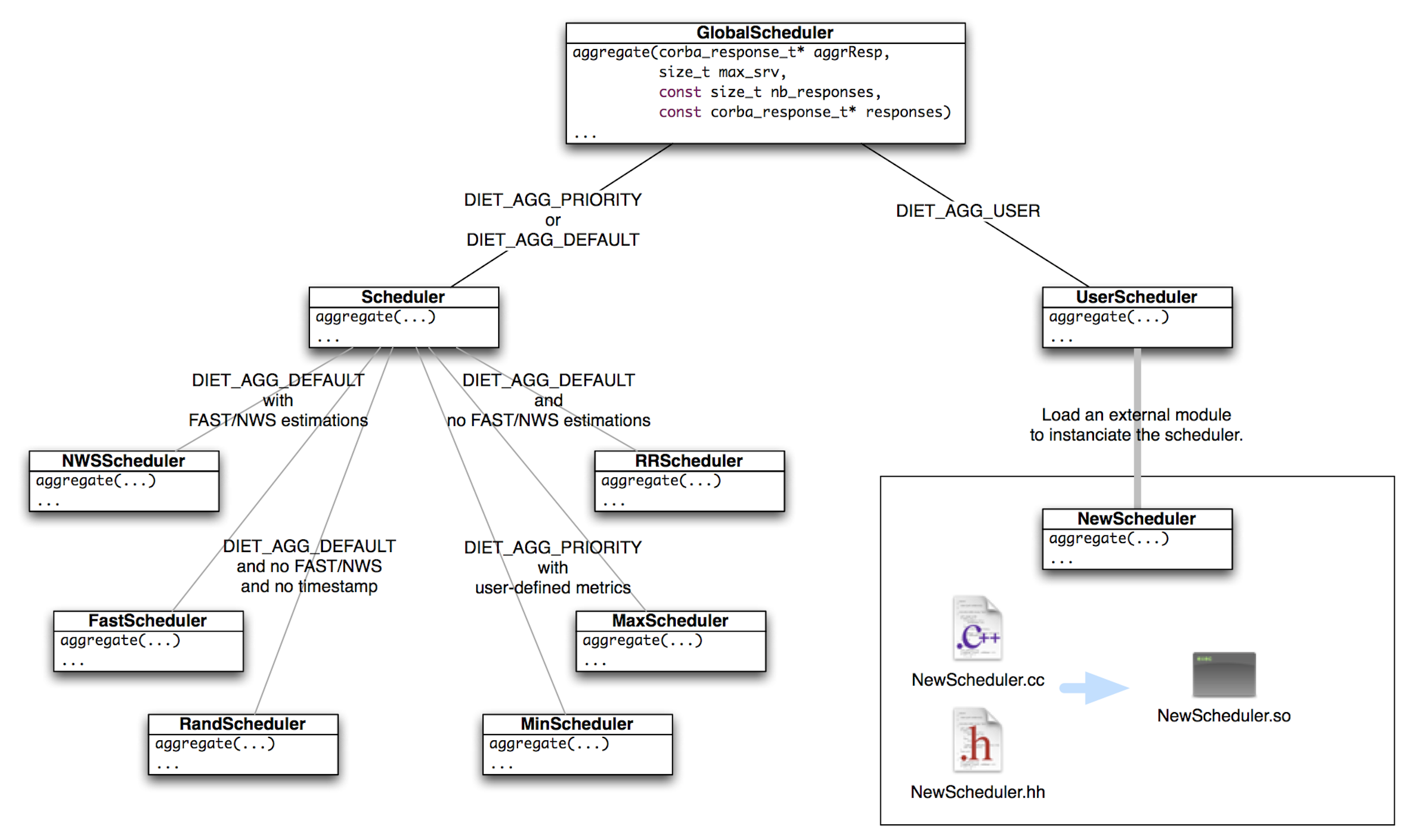To aggregate the responses of the SeD s, DIET uses an aggregation method
which is called by the agents. This method is chosen from the SeD s
by defining the aggregator type (see Section 9.3.2).
By default, two aggregator types are proposed by DIET:
DIET_AGG_DEFAULT and DIET_AGG_PRIORITY. Another aggregator type is
also available: DIET_AGG_USER. Using this
aggregator, the user can define her own aggregation method to be used by
the agents.
Figure 9.2 presents the global schedulers classes
organization in DIET. By choosing the DIET_AGG_USER aggregator, the user
commands the GlobalScheduler class to load an external module containing
a UserScheduler class overloading the aggregate method.
Figure 9.2:
Schedulers classes organization in DIET.
|
 |
The user-defined aggregation method just needs to sort the responses from the
SeD s. By locating the aggregation method on the agent, we can use different
scheduling strategies which could not be implemented at the SeD level. These
schedulers can also avoid some scheduling problems while submitting asynchronous
jobs (with “least recently used” scheduler for example).
The DIET Team - Mer 29 nov 2017 15:13:36 EST